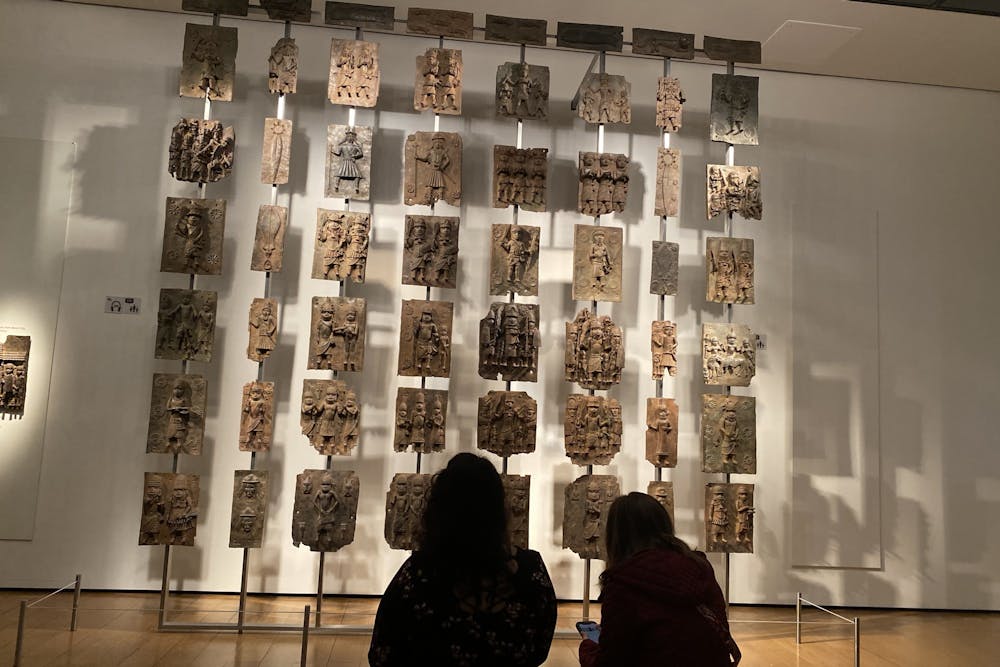Sand-dried Egyptian mummies, human bone replications, pieces of hair plaits and the Rosetta Stone fill display cases in the British Museum. Downstairs in the African exhibit, the Benin Bronzes — a group of decorative plaques and commemorative heads of human figures and animals made of ivory, leather, coral and wood — are on display for people to view. While astounding to the eye, these artifacts have caused a lot of controversial discussions.
Many believe these relics should be returned to their original owners, while others believe they belong in the display cases of the British Museum.
Visitor Donny Moore said the British Museum was a way to learn more about African history during Black History Month. When he walked through the Egyptian and African exhibitions, the 30-year-old white man felt uncomfortable with seeing such personal items.
“This stuff shouldn’t be here,” he said.
While it is interesting to see these relics with your own eyes, there’s this feeling of intrusion when gazing at these artifacts, especially when learning these relics were obtained due to looting during the colonial period.
The museum is well-known for its collection of Egyptian artifacts. According to the New Arab, more than 50,000 artifacts are from Egypt, and most of them were acquired when Great Britain had colonial power over Egypt.
“The most visible legacy of a brutal colonial past showcased by the display of foreign heritage as trophies in a collection,” the article said about the British Museum.
The Benin Bronzes are in the middle of this controversial discussion. Made in the 16th century, the Bronzes were created in the ancient Kingdom of Benin, which was in present-day southern Nigeria. The country of Nigeria has asked the British Museum for the Bronzes back but has yet to receive them.
“There’s this argument of, ‘No, they don’t know how to deal with it’ and that’s racism in itself,” museum visitor Jamie Scheair-Udeh said.
The Bronzes are displayed in museums around the world, including the Metropolitan Museum in New York. However, the British Museum happens to have the largest display of them, with more than 200 pieces in its collection.
According to a New York Times article, Nigeria's local and national governments and Benin’s royal family are working together to open a museum in Benin City, Nigeria. The museum is planning to open in 2023 and will have at least 300 Benin Bronze Sculptures.
The British Museum acknowledges the history behind the Benin Bronzes, and the history is connected to the trans-Atlantic slave trade. The British Museum website explains the United Kingdom came into possession of these statutes while having colonial power over many ports and trading routes along the African coast, including some in Nigeria. Many lives were lost as tribes and kingdoms, like the Benin kingdom, fought against the British troops to protect themselves, their land and relics.
United Kingdom Culture Secretary Oliver Dowden said the Benin Bronzes “properly reside” in the British Museum in a statement on Sept. 10.
Museum visitor Philip Udeh believes the Bronzes should go on tour to many museums around the world, so people can see African relics and learn of their historical significance.
“Black people around the world need to see this,” Udeh said. “These are symbols that show us that there’s a lot more before enslavement.”






